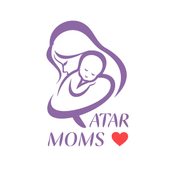The breastfeeding journey is an exciting and fulfilling experience for all mothers. It grants them the significant responsibility of nurturing their baby's growth and development. To ensure the health and safety of their babies, mothers must pay attention to all the details that protect them from illnesses, and one crucial aspect is cleaning breast pumps regularly and effectively to minimise the transmission of germs and bacteria.
In this article, we will explore the importance of cleaning breast pumps and the proper method to ensure effective sterilisation. We will also discuss practical tips and guidelines to maintain the pump's cleanliness and enhance its efficacy.
The Importance of Cleaning Breast Pumps
1. Infection Prevention
The primary goal of sterilising the breast pump is to minimise the transfer of bacteria and germs from the pump to the milk and, subsequently, to the baby's mouth. This, in turn, reduces the risk of developing breast infections and bacterial infections that can negatively impact the baby's health.
2. Preservation of Milk Purity
By cleaning breast pumps, the freshness and purity of expressed milk are maintained. This is achieved by preventing the buildup of bacteria and residues inside the pump, thus ensuring the quality and nutritional value of the milk.
3. Maintenance of Quality
Regular sterilisation of the breast pump also ensures proper storage of the pump, helping to maintain its quality and prolong its lifespan.
4. Preservation of Maternal Physical Health
By regularly cleaning breast pumps, cleanliness is maintained in the parts that come into direct contact with the breast, preventing the accumulation of residues and contributing to overall breast health.
5. Preservation of Maternal Mental Health
With proper care and sterilisation of the breast pump, mothers feel reassured and confident in providing a healthy and clean environment for their babies. This helps them continue the breastfeeding journey with confidence and peace of mind.
6. Time and effort savings
Cleaning breast pumps after each use saves time and effort for mothers. They don't have to clean the parts repeatedly when it comes to feeding the baby.
How to Sterilize Breast Pump Parts?
- Before starting the sterilisation process, ensure that your hands are thoroughly washed with soap and water.
- Disconnect all detachable parts of the breast pump, such as the covers, valves, and tubes.
- Clean the pump parts thoroughly using a soft brush and clean water.
- Use a specialised solution for sterilising medical instruments and immerse the pump parts in it for 10 minutes.
- Rinse all the parts with water to remove any traces of the disinfectant solution.
- Dry the parts using a clean, dry towel or leave them to air dry for a sufficient period to ensure complete dryness.
- Reassemble the breast pump carefully, ensuring a secure closure to avoid any air leakage.
- Store the breast pump in a clean, dry place to keep it clean and ready for use.
Important Tips and Guidelines for Effective Cleaning of Breast Pumps:
1. Regular Cleaning
washing pump parts between sessions with soap and water to minimise the buildup of milk and residues on the pump parts, which create an ideal environment for bacterial growth.
2. Regular Sterilisation
cleaning breast pumps, especially if you use them daily. You can immerse the breast pump in boiling water or use a sterilising solution to ensure the elimination of bacteria and germs.
3. Proper Drying
After cleaning breast pumps, make sure to completely dry all the parts before reassembling them. Use a clean, dry towel or let them air dry naturally, as moisture is a favourable factor for bacterial growth.
5. Proper Storage
When not in use, store the breast pump in a clean, dry, and dust-free place to maintain its integrity for an extended period. It is recommended to keep it in a sterilised storage bag or container.
6. Replacement of Worn Parts
Check the condition of all replaceable parts. If there are any worn-out or damaged parts, replace them immediately to ensure effective sterilisation and quality usage.
7. Avoid Sharing
The breast pump should be strictly for personal use. Avoid sharing it with others to maintain health and safety.
In this article, it is evident that washing pump parts between sessions is an essential part of the infant care routine, as it plays a crucial role in promoting the baby's safety and protection against diseases and contamination. Therefore, mothers should prioritise regular sterilisation of the breast pump and adhere to proper sterilisation practices. It is also advisable to consult the medical team if there are any questions or concerns. Additionally, referring to the manufacturer's cleaning and sterilisation instructions is recommended to ensure a clean and healthy breastfeeding environment.
For Moms, shope at Qatar Moms store to buy the best products for breast care that is safer for your health and baby, like Electric pump, manual pump, warming lactation massager.
 FREE DELIVERY FOR ORDERS ABOVE 100 QAR
FREE DELIVERY FOR ORDERS ABOVE 100 QAR DELIVERY WITHIN 3 HOURS
DELIVERY WITHIN 3 HOURS APPLE PAY AND CARD PAYMENT AVAILABLE
APPLE PAY AND CARD PAYMENT AVAILABLE



